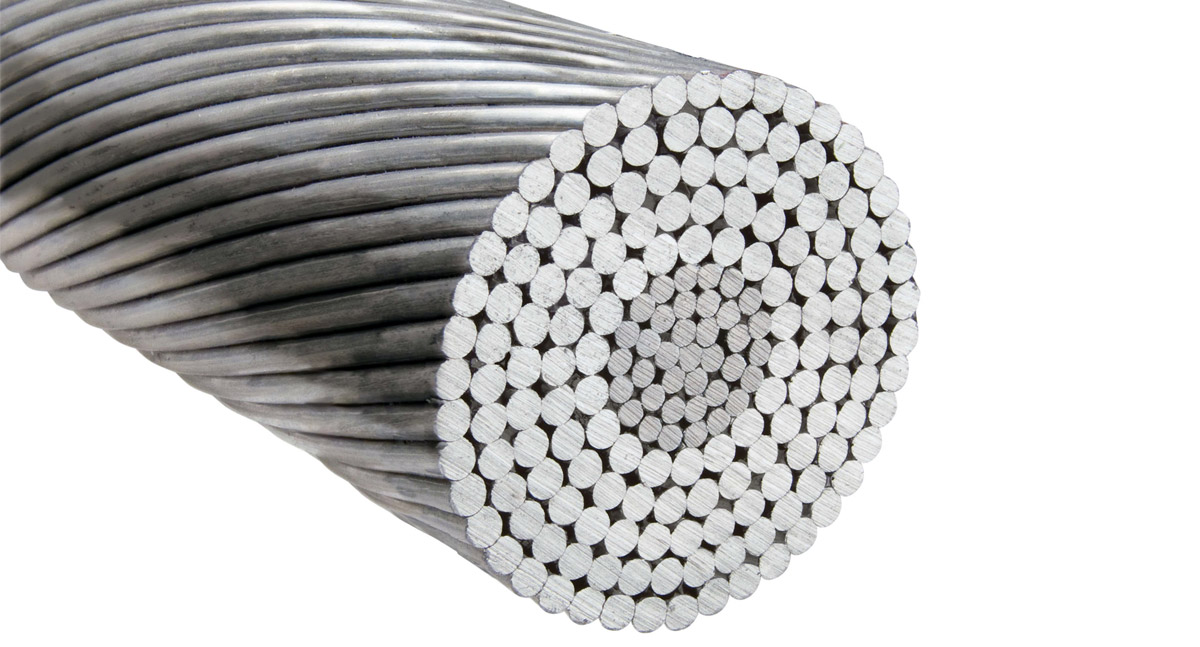
Overhead power lines snaking across the country are the backbone of Australia’s electricity grid. But what exactly carries the current across these long distances? The answer: Aluminium Conductor Steel Reinforced (ACSR) cables.
What is an ACSR Cable?
ACSR cables are a type of high-strength conductor specifically designed for overhead power transmission applications. They are composite conductors, meaning they combine two distinct materials to achieve the best of both worlds:
- Aluminium Strands: The outer layer of the cable is comprised of numerous strands of a specific type of aluminium – EC grade (alloy 1350). This aluminium offers excellent electrical conductivity, allowing for efficient current flow.
- Steel Core: At the center of the ACSR cable lies a core made of either a single galvanised steel wire or multiple stranded galvanized steel wires. The galvanization process adds a protective zinc coating to the steel, enhancing its corrosion resistance. This core provides the ACSR cable with the crucial mechanical strength it needs to:
- Support its own weight, especially for long spans between power pylons.
- Withstand harsh weather conditions, such as strong winds, ice buildup, and even extreme temperatures.
What Are The Advantages of ACSR Cables?
The combination of lightweight aluminium and high-strength steel in their design makes ACSR cables the most economical solution for several reasons:
- Cost-Effective: Aluminium is significantly lighter and less expensive than pure steel. This translates to lower overall costs for materials, transportation, and installation.
- Excellent Conductivity: The outer aluminium layer ensures efficient electricity transmission with minimal energy loss.
- High Strength: The steel core provides the necessary strength for long spans and withstand harsh weather conditions, such as strong winds, ice buildup, and extreme temperatures.
- Durability: The galvanized steel core offers good corrosion resistance, making ACSR cables suitable for Australian environments.
By combining these advantages, ACSR cables have earned a well-deserved reputation for dependability under even the most adverse weather conditions, making them the go-to choice for a significant portion of Australia’s overhead power transmission network.
Why are ACSR Cables used in Australia?
ACSR cables are particularly well-suited for Australia’s overhead power transmission needs due to several key properties:
- High Strength: The steel core offers superior strength compared to pure aluminium cables. This is crucial for long spans between power pylons commonly seen in the Australian landscape.
- Lighter Weight: While strong, ACSR cables are significantly lighter than steel cables of comparable strength. This translates to lower installation and maintenance costs.
- Corrosion Resistance: Aluminium naturally offers good corrosion resistance. Additionally, some ACSR cables utilize an aluminium clad steel core for enhanced protection in harsh Australian environments.
- Standardised Design: In Australia, the design and manufacture of ACSR cables adhere to strict guidelines outlined in the Australia and New Zealand Standards (AS/NZS), including AS/NZS 1531, AS/NZS 3607, AS/NZS 1222 (Part 1 & 2), and AS/NZS 1746. These standards ensure consistent quality and safety throughout the country’s power grid.
What Materials Are Used in Overhead Conductors?
A variety of materials play a crucial role in constructing overhead conductors, each offering specific advantages:
- Aluminium: Highly valued for its excellent electrical conductivity, allowing for efficient current flow. This is why aluminium forms the outer layer of ACSR cables and is used in All Aluminium Conductors (AAC).
- Aluminium Alloy: For enhanced strength compared to pure aluminium, some conductors utilize aluminium alloys. A common alloy in Australia is AAAC 1120, which incorporates copper and magnesium for increased strength with minimal conductivity loss.
- Galvanised Steel: Offers superior mechanical strength and finds application in conductors like ACSR/GZ (Aluminium Conductor Steel Reinforced/Galvanised) for supporting heavier loads. The steel is hot-dip galvanized for corrosion resistance.
- Aluminium Clad Steel: Combines the strength of steel with the conductivity of aluminium. Used in ACSR/AC (Aluminium Conductor Steel Reinforced/Aluminium Clad) cables, it provides a lightweight option with good current carrying capacity and corrosion resistance.
- Copper: Though rarely used in modern bare overhead transmission due to its higher cost, copper offers excellent conductivity and finds application in catenary systems for railway electrification.
Overhead Conductor Standards in Australia
| AS/NZS | Conductor Designation | Conductor Description |
|---|---|---|
| 1531 | AAC | All aluminium conductor |
| 1531 | AAAC | All aluminium alloy conductor |
| 3607 | ACSR/GZ | Aluminium conductor, galvanised steel reinforced |
| 3607 | ACSR/AC | Aluminium conductor, aluminium clad steel reinforced |
| 1222-1 | SC/GZ | Galvanised steel conductor |
| 1222-2 | SC/AC | Aluminium clad steel conductor |
| 1746 | HD copper | Hard drawn copper conductor |
Where Are ACSR Cables Used?
The primary application of ACSR cables is in overhead power transmission lines, carrying electricity across long distances from generation stations to substations for distribution. They may also be used for medium voltage distribution lines or as messenger wires to support other overhead cables.
